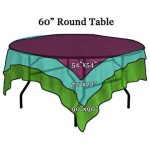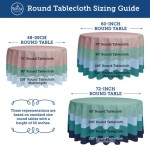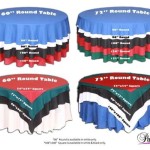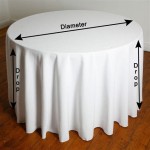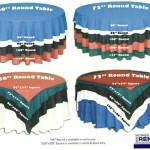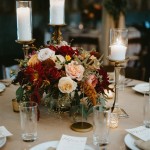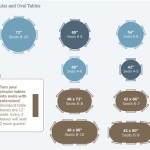How to Set Up Tables for a Wedding Reception Party
Setting up the tables for a wedding reception is a crucial element in creating a memorable and aesthetically pleasing experience for the newlyweds and their guests. Careful planning and execution are essential to ensure both functionality and visual appeal. This article provides a comprehensive guide to the process, covering key considerations for table arrangement, decor, and etiquette.
The process begins long before the actual setup, with careful consideration of the venue layout, guest count, and overall wedding theme. These factors directly influence the number of tables required, their optimal size and shape, and the style of linens and centerpieces best suited for the occasion. Neglecting these preliminary steps can lead to logistical issues and a less-than-ideal ambiance.
Understanding the intricacies involved in setting up tables for a wedding reception allows event organizers and decorators to create a cohesive and welcoming environment. Elements such as table spacing, chair placement, and the selection of appropriate tableware are vital details that contribute to the overall success of the event.
Determining Table Arrangement and Spacing
The first step in setting up wedding reception tables involves determining the arrangement and spacing. This requires a floor plan of the venue, accurately depicting the available space, including doors, windows, and any permanent fixtures. The floor plan serves as a guide for maximizing seating capacity while ensuring comfortable circulation for guests and service staff.
Consideration should be given to the placement of focal points, such as the head table, dance floor, and entertainment area. The head table, typically reserved for the wedding couple and their immediate family or wedding party, is often positioned to provide optimal visibility for all guests. The dance floor should be readily accessible and of sufficient size to accommodate the anticipated number of dancers.
Round tables are a popular choice for wedding receptions due to their versatility and ability to foster conversation. Typically, round tables seat between eight and ten guests. Rectangular tables, while less common, can be arranged to create a more formal or communal atmosphere, and they can be particularly useful in venues with limited space. Square tables offer a modern aesthetic and can be combined to create larger seating arrangements.
Spacing between tables is crucial for comfort and accessibility. A minimum of three feet between tables is recommended to allow guests and servers to move freely. Wider spacing may be necessary if buffet lines or other high-traffic areas are located near the tables. Attention should be given to complying with fire codes and ensuring clear exit paths.
Once the table arrangement is finalized, physically marking the table locations on the venue floor can be beneficial. This allows for a visual confirmation of the layout and helps identify any potential problems before the actual setup begins. Clear communication with the venue staff regarding the table arrangement is essential to ensure a smooth and efficient setup process.
Selecting Linens and Tableware
The selection of linens and tableware significantly impacts the overall aesthetic of the wedding reception. Linens provide a foundation for the table setting and contribute to the color scheme and formality of the event. Tableware, including plates, cutlery, glassware, and napkins, should be chosen to complement the linens and the overall wedding theme.
Tablecloths are available in a wide range of materials, including cotton, linen, satin, and polyester. Linen tablecloths are a classic choice for formal events, offering a sophisticated and elegant look. Polyester tablecloths are more durable and stain-resistant, making them a practical option for larger events. The color of the tablecloth should coordinate with the wedding colors and the overall ambiance of the venue.
Napkins should be chosen to complement the tablecloths and the style of the tableware. Linen napkins are a luxurious choice for formal events, while paper napkins are a more economical option for casual gatherings. Napkin folds can add an extra touch of elegance to the table setting. Popular napkin folds include the pyramid, the pocket fold, and the rose fold.
The choice of tableware should reflect the formality of the wedding and the style of the food being served. Fine china is typically reserved for formal events, while stoneware or porcelain are suitable for more casual receptions. The number of plates required will depend on the menu, with separate plates needed for appetizers, entrees, and desserts.
Cutlery should be arranged according to proper etiquette. Forks are placed to the left of the plate, with the salad fork on the outside and the dinner fork on the inside. Knives are placed to the right of the plate, with the blade facing inward. Spoons are placed to the right of the knives. Dessert spoons and forks can be placed above the plate or brought out with the dessert course.
Glassware should be selected to complement the beverages being served. Water glasses are typically placed above the knife. Wine glasses should be arranged according to the type of wine being served, with separate glasses for red wine, white wine, and champagne. Champagne flutes are often used for toasting during the reception.
Designing Centerpieces and Table Decor
Centerpieces are the focal point of each table and contribute significantly to the overall aesthetic of the wedding reception. They should be chosen to complement the wedding theme, color scheme, and venue decor. The size and height of the centerpieces should be carefully considered to avoid obstructing guests' views or hindering conversation.
Floral arrangements are a popular choice for wedding centerpieces. The type of flowers, their color, and their arrangement should be consistent with the overall wedding design. Tall floral arrangements can add drama and elegance to the table setting, while low arrangements create a more intimate and conversational atmosphere. The use of seasonal flowers can help reduce costs and add a touch of local flavor.
Non-floral centerpieces can also be a creative and cost-effective option. Candles, lanterns, and decorative objects can be used to create a unique and personalized table setting. Candles can add warmth and ambiance to the reception, while lanterns provide a rustic or bohemian touch. Decorative objects such as vintage books, seashells, or natural elements can reflect the couple's interests and personalities.
Table numbers or names are essential for guiding guests to their assigned seats. They should be clearly visible and easy to read. Table numbers can be displayed on small stands, inserted into floral arrangements, or incorporated into the centerpiece design. Table names, often based on themes related to the couple's interests or travels, can add a personal touch to the reception.
Additional table decor can include place cards, favors, and decorative accents. Place cards should be placed above each guest's plate, indicating their assigned seat. Wedding favors are small gifts given to guests as a token of appreciation. They should be chosen to complement the wedding theme and reflect the couple's personalities. Decorative accents such as ribbons, confetti, or scattered petals can add a finishing touch to the table setting.
Lighting plays a crucial role in setting the mood of the wedding reception. Uplighting, spotlights, and string lights can be used to create a warm and inviting atmosphere. The lighting should be adjusted to complement the table centerpieces and decor. Dimmable lights can be used to transition from a brighter setting during dinner to a more romantic ambiance during dancing.
Attention to detail is paramount when setting up tables for a wedding reception. Every element, from the placement of the silverware to the arrangement of the centerpiece, should be carefully considered to create a cohesive and visually appealing table setting. The goal is to create an inviting and comfortable environment where guests can enjoy the celebration and create lasting memories.
Before the reception begins, it is essential to conduct a final walkthrough of the venue to ensure that all tables are properly set and that no details have been overlooked. This is an opportunity to make any necessary adjustments and ensure that everything is in perfect order for the arrival of the guests.

Table Decor Wedding Reception Layout Layouts Setup
:max_bytes(150000):strip_icc()/table-setting-x-1-12696a3e755e436e818bea3547bacedd.jpg?strip=all)
Wedding Table Ideas

Do You Need A Head Table Or Sweetheart How To Properly Arrange Wedding Bridal Backdrop

Best Wedding Table Decorations 47 Beautiful Tablescapes Hitched Co
:max_bytes(150000):strip_icc()/photo-d011b9734d484ae5ad01b685970a0708-f802d834a79e4800a0bf72bc8c766dcb.jpg?strip=all)
Wedding Seating Chart Templates To Simplify Planning

Round Tables Vs Banquet Which Is Right For My Event Allied Solutions Party Als

Wedding Planning Head Table Setup Tips For Photographing Toasts Lynnereznickphotography Com
:max_bytes(150000):strip_icc()/plated-wedding-meal-salad-logan-cole-photography-fb-0723-d5bc6b033f124a64b7ae8f12aaf3a38c.jpg?strip=all)
Wedding Reception Meal Styles Menu Ideas

Best Wedding Table Decorations 47 Beautiful Tablescapes Hitched Co

Wedding Table Settings Ideas And Inspiration For Your Special Day
Related Posts

